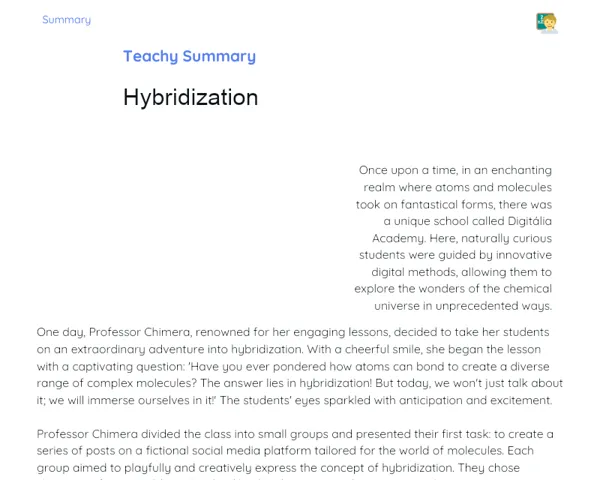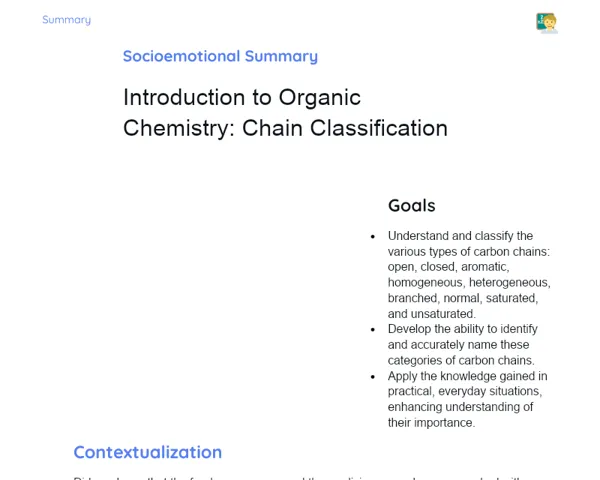Summary Tradisional | State Changes
Contextualization
The changes in the states of matter are essential events that occur due to variations in temperature and pressure. Matter can typically be found in three key states: solid, liquid, and gas. Each change of state signifies a transition between these forms and is marked by specific processes. Grasping these processes is important for explaining numerous natural events and practical applications in our daily lives.
For instance, melting and solidification are changes of state that signify the transition from solid to liquid and vice versa. When a solid like ice is heated, it takes in thermal energy and changes into a liquid, a process we know as melting. The opposite process, known as solidification, happens when a liquid such as water loses thermal energy and solidifies into ice. Other significant processes include vaporization (the transition from liquid to gas), condensation (from gas to liquid), and sublimation (directly from solid to gas).
To Remember!
Melting
Melting is the process where a substance transforms from a solid state to a liquid state. This occurs when the substance reaches its melting point, the temperature at which the forces keeping the particles in a solid form break down due to an increase in thermal energy. A common example in Indian households is the melting of ice, which converts to liquid water when heated to 0°C (32°F).
During melting, the particles of a substance absorb thermal energy, causing them to vibrate more vigorously and separate from one another, breaking the bonds that maintain the solid structure. This process is endergonic, meaning it requires energy input. The absorbed energy allows the particles to overcome intermolecular forces and move more freely as a liquid.
Melting can be observed in everyday life and has various applications. For example, the melting of candle wax occurs when the solid wax is heated by the flame and transforms into liquid. In metallurgy, melting metals is crucial for moulding and making products.
-
Melting is the transition from solid to liquid.
-
Occurs when the melting point is reached.
-
Requires the absorption of thermal energy.
Solidification
Solidification is the reverse of melting, where a substance transitions from a liquid state to a solid state. This occurs when the liquid loses thermal energy and reaches its freezing point, the temperature where particles slow down and come together to form a solid structure. A familiar example is water freezing into ice when chilled to 0°C (32°F).
During solidification, the particles release thermal energy, causing them to slow down and get closer together, allowing intermolecular forces to establish a rigid structure. This process is exergonic, meaning it releases energy. The released energy helps the particles organise themselves into a solid.
Solidification is vital across various sectors, such as the food industry for ice-making and freezing food, as well as in manufacturing where liquid metals are solidified to form specific components.
-
Solidification is the transition from liquid to solid.
-
Occurs when the freezing point is reached.
-
Releases thermal energy during the process.
Vaporization
Vaporization is the process of transitioning a substance from liquid to gas. This can happen in two main ways: evaporation and boiling. Evaporation is a gradual process that takes place at the surface of the liquid, whereas boiling is a rapid process occurring when the liquid hits its boiling point. A typical example of evaporation is the drying of a puddle on a sunny day, while boiling can be observed when water reaches 100°C (212°F).
During evaporation, surface particles gain enough energy to overcome intermolecular forces and change to a gas. This process occurs below the boiling point and is influenced by factors like temperature, humidity, and surface area. Boiling, however, occurs when the liquid’s temperature reaches the boiling point and its vapor pressure equals atmospheric pressure, resulting in bubbles that rise to the surface and release vapour.
Vaporization plays a key role in the water cycle, leading to cloud formation and precipitation. It's also significant in industries such as liquid distillation and energy production in power plants.
-
Vaporization is the transition from liquid to gas.
-
Can occur through evaporation or boiling.
-
Evaporation is slow and happens at the surface; boiling is rapid and throughout the liquid.
Condensation
Condensation is the process where a substance shifts from a gaseous state to a liquid state. This happens when vapor cools and loses thermal energy, allowing particles to come together to form intermolecular bonds. A typical illustration of condensation is the formation of droplets on a cool glass on a hot day, where water vapour from the air condenses on the cold surface.
During condensation, vapour particles lose thermal energy, causing them to move more sluggishly and cluster together. As the temperature decreases, intermolecular forces come into play, enabling the particles to arrange themselves into a liquid state. This process is exergonic, implying it releases energy in the form of heat.
Condensation is a fundamental aspect of the water cycle, contributing to cloud formation and rainfall. It also finds practical applications in refrigeration and distillation, where vapor is condensed to separate components of mixtures.
-
Condensation is the transition from gas to liquid.
-
Occurs when vapor loses thermal energy.
-
Releases energy in the form of heat.
Key Terms
-
State Changes: Transitions among solid, liquid, and gas.
-
Melting: The process of changing from solid to liquid.
-
Solidification: The process of changing from liquid to solid.
-
Vaporization: The process of changing from liquid to gas.
-
Evaporation: Slow vaporization at the surface of a liquid.
-
Boiling: Rapid vaporization that occurs throughout the liquid mass.
-
Condensation: The process of changing from gas to liquid.
-
Sublimation: The direct transition from solid to gas.
-
Resublimation: The direct transition from gas to solid.
Important Conclusions
In this lesson, we delved into the changes in the states of matter, a fundamental phenomenon arising from shifts in temperature and pressure. We discussed processes such as melting, solidification, vaporization, condensation, sublimation, and resublimation, each involving specific transitions among solid, liquid, and gas states. We illustrated these concepts with familiar examples, like the melting of ice and the boiling of water, making the ideas more relatable to students.
Grasping these processes is not just crucial for understanding natural occurrences but also for various practical applications in everyday life, like in industries, weather studies, and common activities. For instance, processes like melting and solidification are key in material production, while vaporization and condensation are vital to the water cycle and energy generation.
We underline the importance of this knowledge by encouraging students to observe these state changes in their surroundings and think about their practical and scientific implications. Recognizing these processes enhances our appreciation of the science that underpins many natural phenomena and their applicability to real-world challenges.
Study Tips
-
Review the examples we discussed and try to spot other instances of state changes in your daily routine.
-
Create diagrams or mind maps showcasing the transitions between solid, liquid, and gas states, including processes like melting, solidification, vaporization, condensation, sublimation, and resublimation.
-
Explore supplementary resources like textbooks and popular science articles to deepen your understanding of the conditions and applications related to state changes.



